Do you have a question about the Craftsman 137.216200 and is the answer not in the manual?
Details the warranty terms for the scroll saw, including repair or replacement options.
Details the power source, speed, and speed control for the saw's motor.
Lists blade type, depth of throat, stroke, and cut depths at various angles.
Provides table size, tilt capabilities, and sawdust blower feature.
Emphasizes familiarizing with the operator's manual for safe operation and hazard awareness.
Highlights the importance of a clean, well-lit work area, keeping children away, and child-proofing.
Advises wearing appropriate clothing, footwear, hair covering, and safety goggles compliant with ANSI Z87.1.
Stresses securing the workpiece with clamps and disconnecting tools before servicing or changing accessories.
Instructs to properly tension the blade and ensure teeth point downward for safe operation.
Emphasizes securely fastening the scroll saw to a firm surface to prevent movement or tipping.
Mandates turning the power off and removing the plug before adjustments or leaving the work area.
Details proper grounding procedures to reduce the risk of electric shock for the tool.
Provides advice on selecting and using appropriate, good-condition extension cords for safe operation.
Lists various accessories recommended for the scroll saw, like blades and pattern kits.
Guides users on how to carefully unpack and verify all parts against the provided list.
Defines specific terms and components related to the operation and parts of the scroll saw.
Explains common woodworking terminology used in the context of cutting operations.
Provides step-by-step instructions for assembling the leg stand for the scroll saw.
Details the process of attaching the scroll saw unit securely to its assembled stand.
Explains how to permanently mount the scroll saw to a workbench for stable operation.
Details the location and method for convenient storage of blades and hex wrenches.
Explains how to use the collection port for sawdust removal and internal cleaning.
Details the steps for removing plain-end saw blades, noting specific procedures.
Provides steps for installing plain-end blades, ensuring correct orientation and tension.
Guides on removing pin-end blades, including tension release and holder adjustments.
Details installing pin-end blades, proper tensioning, and pin seating.
Details how to adjust the blade guard assembly for proper positioning relative to the workpiece.
Explains how to position the sawdust blower to effectively clear the cutting line.
Provides guidance on choosing appropriate blades based on material type, thickness, and cutting intricacy.
Explains the function and use of the variable speed control knob for adjusting cutting speed.
Describes the overload breaker's role in protecting the motor from overheating and how to reset it.
Advises on feeding techniques, cutting on the down stroke, and blade wear for optimal results.
Offers guidance on cutting various materials and choosing appropriate blades.
Provides step-by-step instructions for making freehand cuts, including setup and safety precautions.
Details the process for setting up and performing cuts at various angles on the scroll saw.
Guides on setting up a guide for making rip or straight line cuts accurately.
Provides general care advice, including waxing the work table for smooth gliding.
Covers motor service limitations and lubrication instructions for upper arm bearings.
A guide to diagnosing and resolving common problems encountered with the scroll saw operation.
Provides instructions on how to order replacement parts using model and part numbers.
Lists parts specific to the stand, with instructions for ordering by model and part number.
Details the warranty terms for the scroll saw, including repair or replacement options.
Details the power source, speed, and speed control for the saw's motor.
Lists blade type, depth of throat, stroke, and cut depths at various angles.
Provides table size, tilt capabilities, and sawdust blower feature.
Emphasizes familiarizing with the operator's manual for safe operation and hazard awareness.
Highlights the importance of a clean, well-lit work area, keeping children away, and child-proofing.
Advises wearing appropriate clothing, footwear, hair covering, and safety goggles compliant with ANSI Z87.1.
Stresses securing the workpiece with clamps and disconnecting tools before servicing or changing accessories.
Instructs to properly tension the blade and ensure teeth point downward for safe operation.
Emphasizes securely fastening the scroll saw to a firm surface to prevent movement or tipping.
Mandates turning the power off and removing the plug before adjustments or leaving the work area.
Details proper grounding procedures to reduce the risk of electric shock for the tool.
Provides advice on selecting and using appropriate, good-condition extension cords for safe operation.
Lists various accessories recommended for the scroll saw, like blades and pattern kits.
Guides users on how to carefully unpack and verify all parts against the provided list.
Defines specific terms and components related to the operation and parts of the scroll saw.
Explains common woodworking terminology used in the context of cutting operations.
Provides step-by-step instructions for assembling the leg stand for the scroll saw.
Details the process of attaching the scroll saw unit securely to its assembled stand.
Explains how to permanently mount the scroll saw to a workbench for stable operation.
Details the location and method for convenient storage of blades and hex wrenches.
Explains how to use the collection port for sawdust removal and internal cleaning.
Details the steps for removing plain-end saw blades, noting specific procedures.
Provides steps for installing plain-end blades, ensuring correct orientation and tension.
Guides on removing pin-end blades, including tension release and holder adjustments.
Details installing pin-end blades, proper tensioning, and pin seating.
Details how to adjust the blade guard assembly for proper positioning relative to the workpiece.
Explains how to position the sawdust blower to effectively clear the cutting line.
Provides guidance on choosing appropriate blades based on material type, thickness, and cutting intricacy.
Explains the function and use of the variable speed control knob for adjusting cutting speed.
Describes the overload breaker's role in protecting the motor from overheating and how to reset it.
Advises on feeding techniques, cutting on the down stroke, and blade wear for optimal results.
Offers guidance on cutting various materials and choosing appropriate blades.
Provides step-by-step instructions for making freehand cuts, including setup and safety precautions.
Details the process for setting up and performing cuts at various angles on the scroll saw.
Guides on setting up a guide for making rip or straight line cuts accurately.
Provides general care advice, including waxing the work table for smooth gliding.
Covers motor service limitations and lubrication instructions for upper arm bearings.
A guide to diagnosing and resolving common problems encountered with the scroll saw operation.
Provides instructions on how to order replacement parts using model and part numbers.
Lists parts specific to the stand, with instructions for ordering by model and part number.
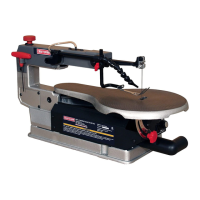
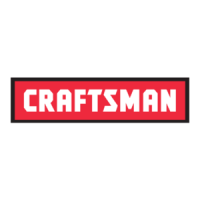
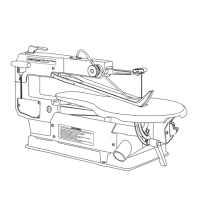
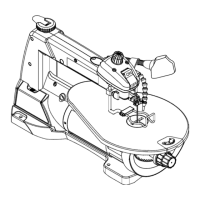
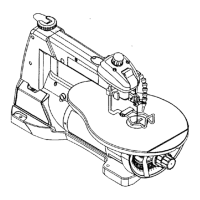
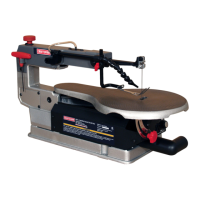

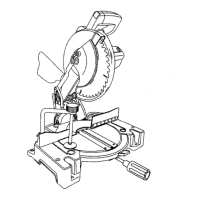
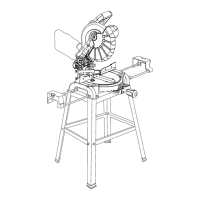
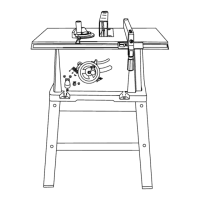
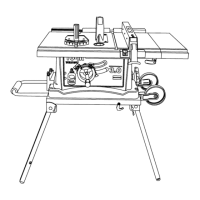
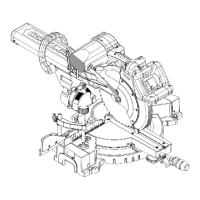
